Tests, tests and more tests.
Whoever is from outside of IT may not believe it, but we have fun creating systems.
Programming, choosing library, framework, adapting business rules to the programming language. But there’s a part that most programmers find hard, or rather, annoying … boring, and for that reason they simply skip it, which are software tests, mostly the black box ones.
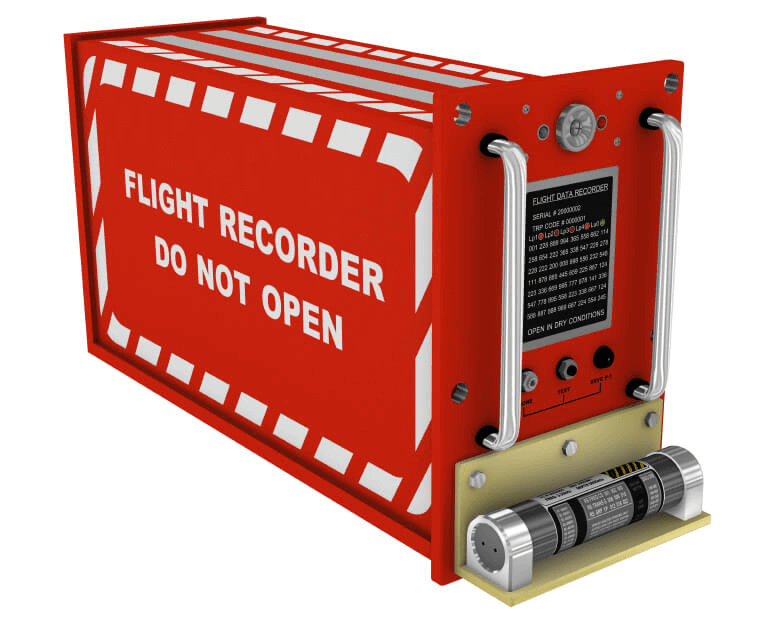
When I say it is hard work, it is not an exaggeration, because with the growth of web applications it has become increasingly complicated to test an application via browser.
In 2002 I came across the first option to test a web application: HTML Unit .
Six lines of code to access Google and do a search …
WebClient webClient = new WebClient();
HtmlPage currentPage = webClient.getPage("http://www.google.com/");
HtmlInput queryInput = currentPage.getElementByName("q");
queryInput.setValueAttribute("boaglio");
HtmlSubmitInput submitBtn = currentPage.getElementByName("btnG");
currentPage = submitBtn.click();
This way left out all the test team that does not know how to code … and then years later came out Selenium IDE :
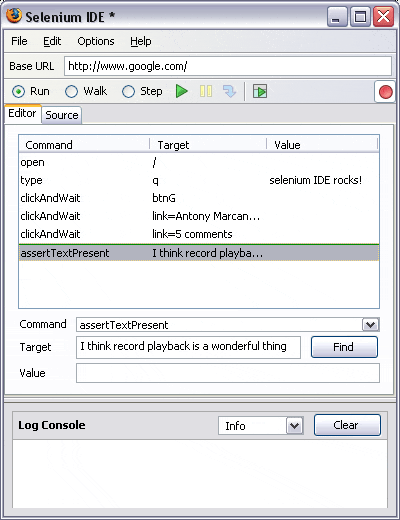
With it, it was possible to generate codes to be used in the tests:
System.setProperty("webdriver.chrome.driver", "C:\\Drivers\\chromedriver.exe");
WebDriver driver = new ChromeDriver();
driver.get("https://www.google.com");
driver.findElement(By.id("lst-ib")).sendKeys("boaglio");
driver.findElement(By.id("_fZl")).click();
driver.manage().timeouts().implicitlyWait(60, TimeUnit.SECONDS);
However these codes always needed adjustments and maintenance was very complicated. Another problem was automating this task was very complicated, which always required someone to do this task.
So due to its difficulty of use the Selenium was a bit of a side in the market, despite being immense potential.
And the situation was pretty much the same until Katalon build a viable option to create tests: Katalon Studio.
It is a free tool that makes it easy to create black box tests, using Selenium underneath and saving the scripts in Groovy.
Let’s repeat this simple test by creating a query with Google:
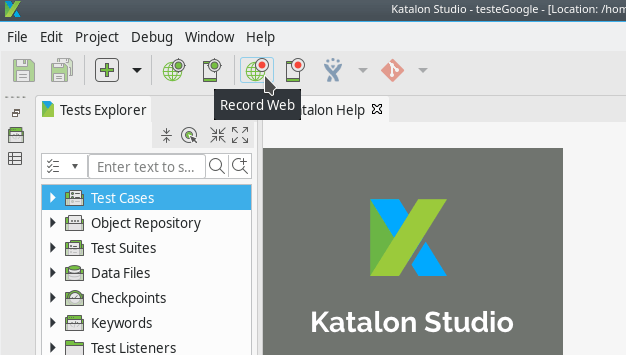
Then we choose the site in Google with Firefox and soon thereafter open the windows, one of the browser and another very similar to the Selenium IDE:
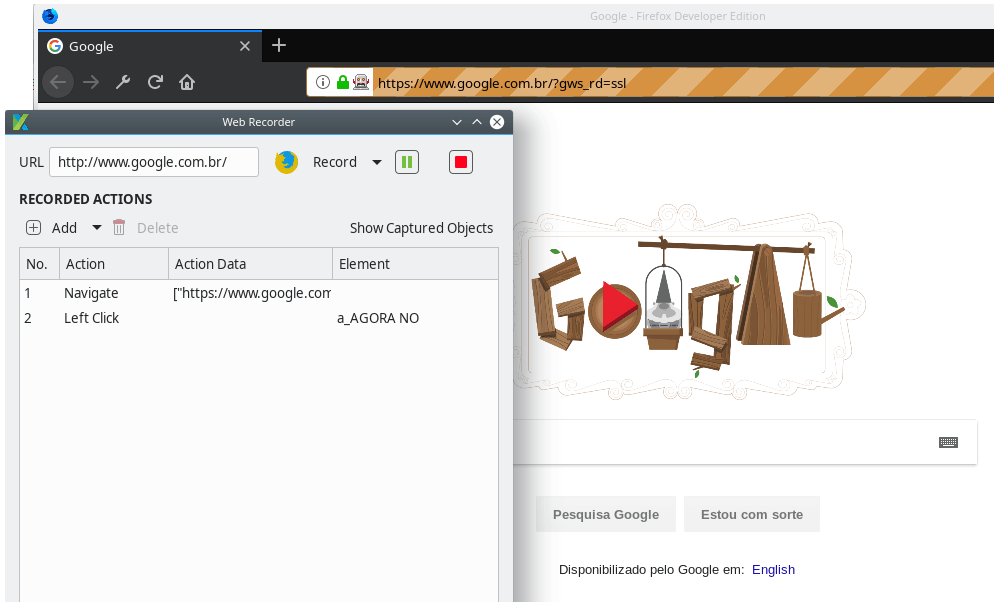
And when we execute the search for boaglio , the commands are registered:
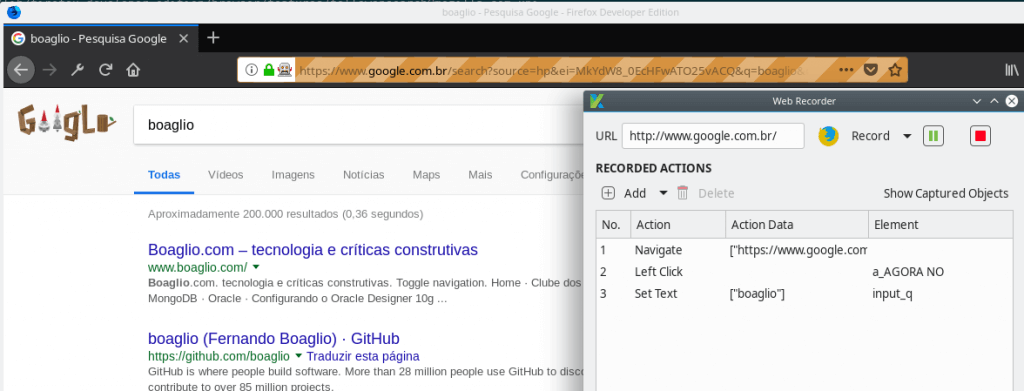
Then the test is transformed into a script, which can be run again:

Did you notice that there are 5 commands to do the Google search?
Exactly these commands are converted by the tool to Groovy:
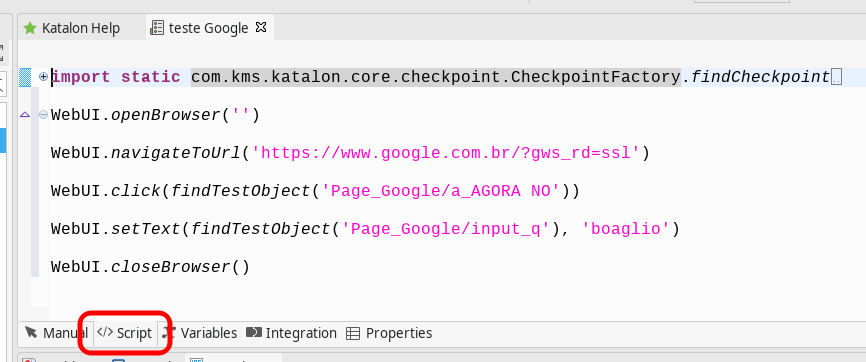
Even after running the script, each step that is performed appears in the tool:

A good choice for testing, right?
But then comes the doubt: a free tool, a company doing all this work … what’s the catch?

There is no catch … the company offers a good tool for free for people to use, and if any company is interested in it you can hire their support , which is paid, simple as that. So there really is no free lunch, which there is is a company strategy to encourage the use of a product to later gain from corporate use.
In conclusion, we can list many advantages in using Katalon Studio </ em>:
- Free and open source technology based tool; </ li>
- organizes tests on projects; </ li>
- tests can be manipulated by those who do not know how to code; </ li>
- organizes tests on projects; </ li>
- available for testing on Web Browsers or Mobiles (via Appium ); </ li>
- allows tests to run on continuously integrated servers, such as the Jenkins </ li>
In the last Java SP Meetup I gave a presentation on this tool:
So start testing and use it!
Fernando Boaglio, for the community </ strong>
